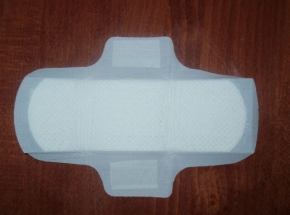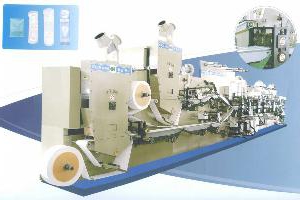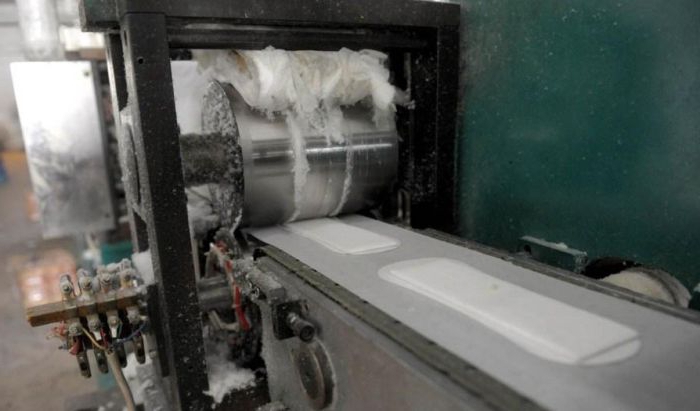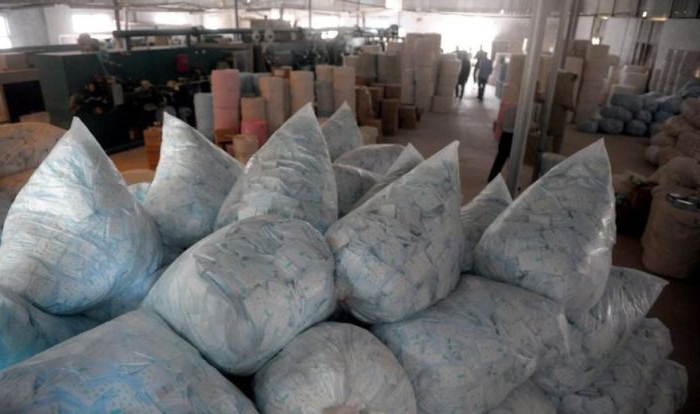In earlier times, women used moss and pieces of fabric, paper and wool, and other natural materials as hygiene products. A certain semblance of current gaskets was released in the 19th century. After the Second World War, the production of women's pads was put on a commercial basis. Over the entire period of use, the gaskets underwent various changes. In the end, modern industry began to produce comfortable and easy-to-use hygiene products.
Definition and types of goods
 Sanitary pads for women, or, as they are also called, bags, are non-woven products. This is a large group of goods.
Sanitary pads for women, or, as they are also called, bags, are non-woven products. This is a large group of goods.
Nonwoven products include hygiene pads for armpits, absorbent sheets, diapers for adults and children, as well as tampons. These products have a fairly high customer demand.
Currently manufactured gaskets, depending on size and purpose, can be divided into several types. Among them are the following:
- regular, with an average size;
- daily, with a small size and thickness;
- ultra-thin compact products with a small ability to absorb;
- maxi super (for discharge of abundant nature);
- night, with a greater degree of absorption and providing protection in a supine position.
Starting your own business
The production of sanitary pads is a rather promising business for investment. The nonwovens market is one of the fastest growing in Russia. However, at present the overwhelming volume of sanitary pads comes to us from abroad. The main problem in our country is the lack of the necessary raw material base.
 A great attraction for businessmen is currently the non-woven products market. This is due to the large consumer demand for this product and the wide possibilities for substituting supplies from abroad.
A great attraction for businessmen is currently the non-woven products market. This is due to the large consumer demand for this product and the wide possibilities for substituting supplies from abroad.
Composition and structure
So, you decided to start your own production of sanitary pads. First of all, you need to find out what layers this product is made up of.
And there are several of them at the gasket. The outermost, first layer can be made of various materials. Among them are thermal bond, spanbond or perforated polyethylene mesh. The first two nonwovens are classified as “Soft”.
The characteristics of this coating layer include a good distribution ability. In addition, it is very comfortable and able to quickly pass fluid. Perforated mesh is made using the Dry technology. It passes fluid in only one direction. This allows you to create a feeling of comfort and dryness.
Often, sanitary napkins are manufactured using a combination of these two materials. The mesh in such products is in the middle, the “Soft” layer is on the edges and on the wings. As a result, the product becomes more convenient and practical.
The next gasket layer is distribution. As a rule, it is made of thermal bond. Its main purpose is the uniform distribution of fluid over the entire surface of the gasket and its penetration further into the next layer.
Third, the inner layer is absorbent. Its purpose is to collect, distribute and retain liquid in the gasket. Depending on the type of hygiene product, various materials may be used to make the inner layer.
This can be a nonwoven fabric made from cellulose fibers (“Airlaid”), the cellulose itself, as well as loose cellulose fibers in combination with the Meltblown nonwoven fabric. Recently, superabsorbent has been used for the inner layer of the gasket. This material perfectly absorbs liquid, turning it into a gel.
The gaskets also provide for the fourth, lowest layer (“Back sheet”). Its main task is to protect laundry from secretions. Typically, microporous or polyethylene film serves as the material for its manufacture.
Manufacturing technology
The gasket manufacturing process involves several steps. First of all, an absorbent layer is made. To do this, cellulose rolls are placed in the gasket production machine, which, with the help of cutters, is turned into an air substance. After that, a polymer type powder is added to the resulting mass.
The resulting mixture enters the dispenser, which measures the amount of material that is necessary for the absorbent layer. The measured volume falls into a special form for gaskets, and then on the conveyor belt.

At the same time as the absorbent, a distribution layer is also produced. It has a higher density, but it has a rectangular shape and a smaller size. Using heat treatment or using hot melt glue, these two layers are connected on a conveyor belt.
A special roller stamps the gasket in shape. In this case, all layers are thermally welded along the very contour of the product. At the next stage of the technological process, paper is glued to the area of the wings and to the lower part of the gasket.
This ready-made tape is disconnected into separate gaskets by a special punching stamp. Excess and unnecessary material is removed using abrasive foam. After that, it is sucked in with a vacuum cleaner. At the last stage of the process, the gaskets are folded and packaged.
Equipment purchase
Before you start your own business for the production of hygiene products, you will need to draw up a business plan. This document should reflect the main stages preceding the opening of the enterprise, as well as preliminary calculations of capital investments.

The amount of money that you need to lay out when buying a production line will directly depend on the year of production of the equipment, as well as on the manufacturer. The sellers of this product will offer you various options. So, on sites on the Internet you can find European equipment that was previously used in production.
The minimum cost of such a line will be eight hundred thousand rubles. Equipment can be purchased and new. Made in Europe, it will cost up to fifteen million rubles. Despite the impressive difference in price, this line has a very significant advantage: in addition to women's pads, it can also be used for the production of other hygiene products. Your business plan may include the purchase of relatively inexpensive Chinese equipment.
Raw material purchase
Polyethylene materials for the production process can be purchased at a price of 60,000 rubles per ton. The cost of pulp is 55 rubles. for one kilogram.
Staff
In order to organize our own production of sanitary pads, you will need to hire two senior employees, as many technologists, several operators, as well as auxiliary workers. In total, the staff should be about fifteen people.
Initial investment
Financing when starting your own business should take into account the costs of raw materials, the purchase of equipment, as well as the rental of production facilities.

Initially, an entrepreneur will need to invest about five million rubles. The event will pay off in four to five years.
Another area of activity
If you decide to start your own business, then you should pay attention to the release of other goods.The production of lumpy egg pads is also a very profitable business. This product is the only cast container that is manufactured in the CIS. Its main purpose is transportation of finished products from manufacturers to distributors.
The production of gaskets from paronite will also be in demand. These products have high heat resistance. That is why they are used for installation in internal combustion engines.






